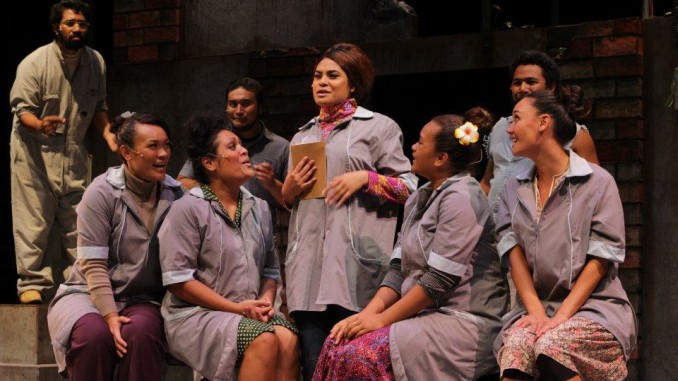
Auckland Participates [by James Wenley]
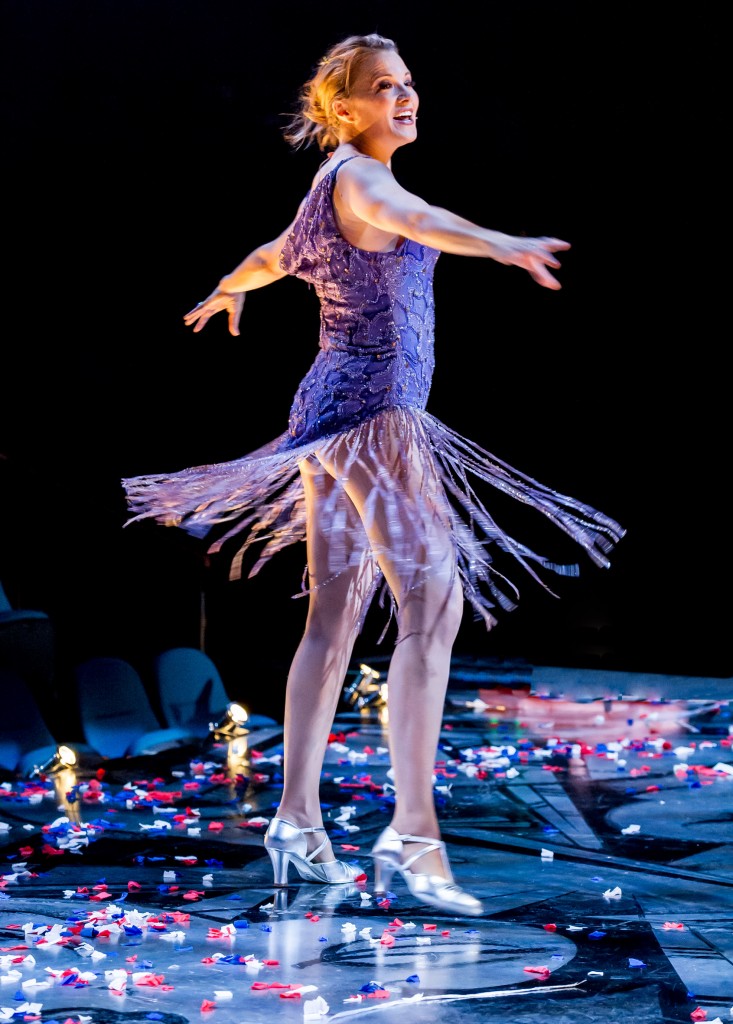
This past year I have partied with underage drinkers, appeared on the 6pm news, ran for my life from snarling zombies, and, for an all too brief moment, locked eyes with a sensuous Lucy Lawless.
If there’s one big trend that has come out of Auckland’s 2013 theatrical year, it’s got to be the year of audience participation. Not the painful-squirming-in-the-seats-as-reluctant-audience-members-wonder-in-dread-if-they-are-going-to-be-picked-on-by-the-performers kind (although there was certainly plenty of that in magical import The Illusionists), but a more active and willing kind of participation.
Let’s call it Active Audience Participation 2.0.
Of course, artists recognise that the exchange between performers and audience is part of what makes theatre particularly special (and fleeting – as no performance, nor audience are ever quite the same), but this year shows like Like There’s No Tomorrow, Live at Six, Apocalypse Z, White Rabbit, Red Rabbit and En Route all played with the way audiences experience AND contribute to the works.
Adding my experience of Michael Hurst’s Chicago to the list may at first seem like a stretch, but I think it speaks to this impulse towards re-capturing immediacy and immersion in 21st Century theatre. In his compelling reinvention of the previously stale musical theatre work, playing in the round at Q, the fit young actors eye-ball the audience as they gleefully expose themselves, making us feel a part of the show in a way quite unlike any Chicago before.
The best shows of 2013 were not for the faint of heart audience member content just to sit in isolation in the dark. The best shows required a little more from us.
Of Fringe and Festival
En Route is a perfect example of this trend. “Happening” twice-daily every day of the Auckland Arts Festival, audience members – armed only with an i-pod, a cell-phone and (hopefully) a good pair of walking shoes – experienced a performance where there were no actors, and no theatre building. Instead, the streets of Auckland became the infinitely changing scenery of the stage, the every-day Aucklanders the actors. It was theatre, but not as we know it.
I had a unique vantage point in observing this performance, working as a guardian on the project, able to chat to participants at the end of their route. In my reflections on Auckland Festival (Auckland: City of Culture?) I observed that:
En Route serves as a good metaphor for the role the 2013 Auckland Arts Festival served for her city. En Route was an outside lens in which our city was reflected back to us – and audiences claimed their own experience and narrative. The Auckland Arts Festival reflected back the Auckland of now at amidst a critical moment of cultural consolidation and a city at a crossroads. We’ve long shed the cloak of cultural cringe, and local work like The Factory and Hui were positioned as the backbone of the Festival, standing shoulder to shoulder with international visitors. But we’re still not at a position of cultural championing either. We’re still trying on for size the idea of our nation as an Island of the Pacific. Focused on the Auckland plan, debate continues as to what sort of city we should be in the future. And just where does the Arts fit into it all?
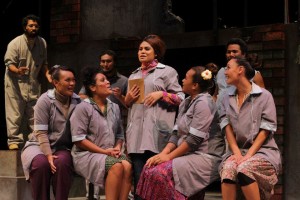
The biggest statement of the festival was the championing of “New Zealand’s first Pacific Musical” The Factory. This had been radically re-worked (new time-period, new tunes, new cast, new ending), with an eye to an international market after its 2011 Mangere Theatre debut, to varying success. The combination of West Side Story meets Saturday Night Fever with a Pasifika flavour should go far, but I worried that “instead of a show that tells a Niu Sila story with a Musical Theatre spin, we get a show that tells a conventional Music Theatre story with a Niu Sila spin.”
We were treated to some exotic and visually exciting visitors like China’s Rhinoceros in Love (which flooded the Maidment with water a month too early) and coup of the Festival, Babel, which made the National Theatre’s comedy blockbuster One Man, Two Guvnors (which tries to pull the wool over the audience’s eyes in pursuit of laughs) seem ho-hum in comparison.
Auckland Fringe kicked off the year with an unshakeable confidence. I wrote in Memories from the Fringe that “2013 was only the third incarnation of Auckland Fringe, but it’s a testament to the tenacity and boldness of its producers, venues, and most importantly, its artists, that it feels like it’s been around for longer now. Auckland: it looks good on you.”
Read that report for fuller detail, but as an audience-goer for Fringe 2013 I was excited by the variety and risk-taking on offer, from the gross-out humour of Dolly Mixture and Gorge, the delightful puppetry of Just Above the Clouds (look out for an early 2014 return-season), the mime of One by One and La Vie Dans une Marienette, the solo soul bearing in Home / The Hilarious Comedy About How I Nearly Killed Myself / A Play About How I Nearly Died But Didn’t Then Learned A Lot About Life Afterward, the poolside Swan Song and Myers Park Celery Stories, as well as the quieter charms of Hummingbird or award-winner Black Faggot. Crammed into three weeks, Fringe had a vitality that laid down the gauntlet for the rest of 2013.
Maidment on Fire
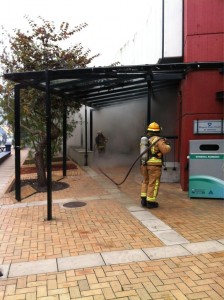
While 2013 was the year Wellington sadly lost the institution of Downstage (though the building remains), Aucklanders were fortunate that this did not prove to be the year that we lost the Maidment Theatre. As I wrote in my report on Auckland Theatre for the 2013 Playmarket Annual:
On April 3rd, The Maidment tweeted the understated macabre comment that “We do not have a new pope”, accompanied by an alarming image of smoke. As fire trucks swarmed on Alfred St, the fears were confirmed: the Maidment was on fire, and it wasn’t looking good. With both the Maidment and Musgrove out of action in the short-term, and other venue usual suspects fully booked, Auckland theatre was momentarily in a state of turmoil. Longing for a waterfront theatre, ATC conceived plan B. There was the cerebral if neutered production of Dean Parker’s Midnight in Moscow in the bowels of the Aotea Centre and an elegant revival of Tennessee Williams’ The Glass Menagerie suited the stage of Selwyn College’s theatre (handily in the heart of subscriber territory). The incident brought out the best in the theatre community as staff from ATC, Maidment and Silo worked long nights to transfer tickets to the new venues.
When it came time for the Hackman Theatre Awards, the Maidment staff again went for black humour, turning up in fluoro fire safety vests. Thankfully, the Auckland theatre community was spared the wake. The Maidment is an unremarkable piece of theatre architecture with a much maligned foyer, but it is one our most dependable theatres and has been host to many remarkable theatre experiences. The Maidment was up and running in astounding speed, as if nothing had happened to it. If we are to take something positive from the flames, it is that the Maidment is still very necessary in our theatre ecology, and we now appreciate her just a little bit more.
The Big Two
The fire threw a big red-hot wrench into Auckland Theatre Company’s plans, in a year which also saw a lighting strike during The Glass Menagerie in their back-up Selwyn Theatre venue. If it was high-drama behind-the-scenes, onstage their season was for the most part mediocre, a label Silo, who were only able to muster four shows this year, also share for their own reasons.
Dave Armstrong’s satiric edge was blunted in ATC’s year opener Kings of the Gym (in more care-free days at The Maidment), replaying anti-PC, creationism, and Bishop Tamaki debates from the previous decade without offering much new farce for thought.
For the first time ATC programmed a work from political playwright battle-horse Dean Parker; Midnight in Moscow was “a play of deep ideas and ideology, presented in a lighter-hearted form” (Reds in your Head). While ATC were still able to fit their stage revolve into the improvised Lower NZI theatre, the difficult venue worked against the play, and couldn’t quite find the right tone within this space.
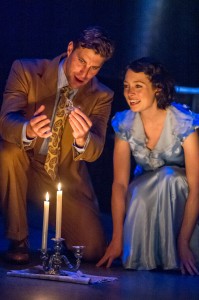
The Glass Menagerie was one of the strongest of the year, Matt Baker remarking that the intimacy generated between Antonia Prebble as Laura Wingfield and Richard Knowles as Jim O’Connor “is beautiful to watch, and at times I found myself forgetting I was in a theatre with 300 other people. (A precious piece )
Mid-year’s Anne Boleyn showcased the scene-chewing brilliance of a powerhouse cast (Henare! Hawethorne! Prast! Blackburn! Lovatt! Grainger! Dunleavy! Etc), though Howard Brenton’s script erred in making Boylene too saintly (The Other Woman). Jennifer Ward-Lealand and Jess Holly Bates gave fantastic performances in wilting climate change comedy The Heretic, however Richard Bean’s treatise left much to be desired, Matt Baker writing that “The biggest character ‘twist’ is by far the weakest option, and everything is wrapped in a nice deus ex machina bow” (Pleasantly controversial)
While The Heretic’s script was offensively inoffensive, Lord of the Flies’ script was a plane-wreck. Nigel Williams’ adaptation of Williams Golding’s Lord of the Flies is unimaginative, “The design, score, and gung-ho performances work overtime to patch over the cracks in the script, but no amount of spectacle can disguise the fact that this is an theatrically poor adaptation, McColl’s interpolations unable to redeem its faults.” (Boys own Apocalypse). Worse still is the added laboured and obvious opening where the cast as contemporary teenagers proudly bring up symbols from the novel to their teacher, a low point of the theatre year. 2000 school students saw the play over its run, no doubt proving useful to English teachers everywhere, but I rather think that the students deserved better.
Silo’s picks were more inspired, but so few in number that it was a mediocre year for the company in that they struggled to make much of an impact. In a rare perfect marriage of cost-saving and artistic boldness, their most exciting programmed work White Rabbit, Red Rabbit, needed zero rehearsal hours, no direction, and little in the way of set (that’s one way to save on costs!).
Hui by Mitch Tawhi Thomas and directed by Rachel House was a moving experience about a whanau returning after the death of their father, giving audiences one of the most memorable theatrical images of the year: “the corpse of Wahie remains in his armchair throughout the play. Well almost, for in several beautifully poignant sequences throughout the play dancer Maaka Pepene rises to walk among his family, the ghost and memory of his presence living on, curiously suggestive of a connection to a wider spiritual world where the body itself is immaterial. These are stunningly effective pitched theatrical moments.”
It’s an indictment on Silo (criticised under Artistic Director Shane Bosher for its cavalier attitude towards presenting local stories) that this production didn’t feel like a Silo production, but an Auckland Festival/Rachel House production, using Silo’s resources.
Damningly, the debut of NZ playwright Victor Rodger’s Protection, which had been hyped when Silo first announced their 2013 programme, disappeared from sight without a trace or comment. What happened, and will we see the play again? In its place came Speaking in Tongues (1996), from Silo favourite Australian Andrew Bovell, which certainly felt a lot more like a Silo production, with such a strong sense of déjà vu that it was a surprise Silo hadn’t done it before. However, as I wrote: “though it fits snuggly into Silo and Bosher’s oeuvre, you probably haven’t seen any other play quite like it. Listen watchfully.” (Same, but Different) It was an incredibly strong production across the perspex-board, and you got the impression that this was the kind of thing Silo wanted to do all along. That may or may not be true, but please don’t market to us in tongues.
Midsummer at Q Loft may have got a little overshadowed by the busy end of year calendar, and the positioning tied itself in knots to assure cynical types it wasn’t a musical, but with two guitars and two performers, Midsummer fully wound its charm over me:
Midsummer realises how sexy an instrument the guitar can be. The best use of the music is when Walker and Musgrove are connected, singing to each other. They don’t sing for a beautiful tone, they sing for truth. “Love will break your heart”… Helena and Bob surrender their logic, their self-respect, their heads, and their hearts. Midsummer may very well get you to surrender some of the same things for you. (And they play guitar too)
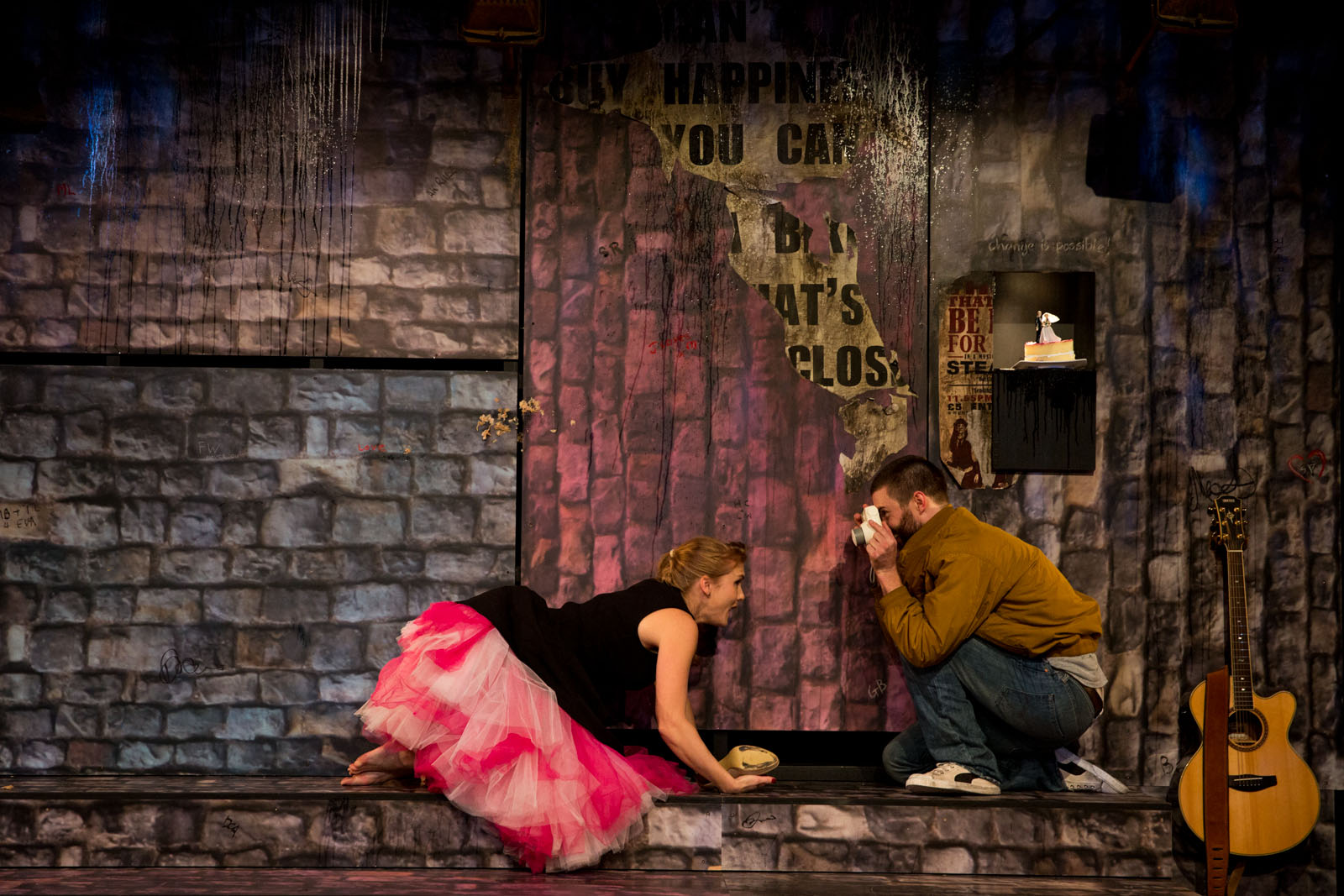
World-Class?
During the second-half of the year one joined-up word was used with such regularity in other reviews that I feared I might have missed some sort of reviewers memo from on high decreeing this phrase that been made obligatory in all Auckland based reviews: “world-class”. And productions in term dutifully pulled out this phrase to quote in their promotion.
It is a phrase I’m cautious about myself as a reviewer. Its use comes with an after-taste of a bottom-of-the-globe small-country syndrome, eager to prove ourselves as a match for the rest of the world. I don’t think it is the reviewer’s job to label something as world-class either, that is for the production itself, heading off to the overseas market (easier written than done, I grant you).
(This was the case for productions like Renee Lyon’s Nick: An Accidental Hero, and Michael Hurst’s No Holds Bard (or whatever they’re calling it these days), which both enjoyed returned seasons in Auckland before heading to the Edinburgh Fringe. Live Live Cinema premiered its take on Dementia 13, before taking that and Carnival of Souls to London.)
Nor do I presume to be an expert on world-theatre – just what sort of world-class are we comparing it to? Sydney? Paris? Broadway and the West End? Further afield?
But I think the phrase is more pernicious than just these reasons: it comes with a suggestion that most of our theatre is NOT world-class, that what New Zealand gets served up is poor compared to what the rest of the world gets.
And I do not think that this is the case at all. From my limited travels I think that New Zealand theatre compares very well indeed. You will get your imaginatively tired, audience dollar chasing productions in any theatre market. You will also find bold and creatively vibrant productions too. While we might lack the funding and population base that sustains “world-leading” companies, we have excellent actors, directors, designers, and a nimbleness that allows the achievement of excellence on a relatively shoe-string budget. I suspect this is an asset.
Take Indian Ink, who have had a remarkable story as an internationally touring company, making quality work with ingenuity and storytelling nous. It is yet to be seen whether their newest work to debut this year, Kiss the Fish, will be “world-class” in the sense that it will be successful in overseas markets, but it’s the type of work that can really be only be made here. And that is worthy of celebration. Where else would you find this theatrical alchemy of Balinese Mask, Commedia tradition, a love of Freddie Mercury, and the company’s hallmark of strong storytelling that is “beautiful, funny, sad and true”, to create a universal fable set on a tropical island overrun by monkeys?

Aucklanders got a taste of the “world-class” mega-budget productions that overwhelm the West End and Broadway markets with the arrival, ten years after its debut, of the musical Wicked. The staging and spectacle you could see in any carbon copy Wicked production around the world, which indeed I did, in London earlier in the year, but what Aucklanders really lucked out on was the Australasian cast. In my opinion, Jemma Rix and Suzie Mathers surpassed their London equivalents. Composer Stephen Schwartz called this cast the best in years. It was only Jay Laga’aia, and his baffling shtick as the Wizard, which caused embarrassment to his fellow kiwis.
These types of productions are looked on with a certain amount of jealousy and fear from local theatre-makers, threatening to suck out the disposable income from audience goers with their top marquee prices. Last year, Auckland Theatre Company’s Little Shop of Horrors lost out to Mary Poppins’s bag of top dollar tricks. This year, Auckland Theatre Company had not one, but two trump-cards: Michael Hurst, and Lucy Lawless.
While Wicked opened with a bang, usher informants suggest audiences numbers steeply declined, and the final week descended into a discount ticket fire sale (not good news if we want more big Musicals heading our way). Meanwhile, tickets for Chicago were scarce, extending the season an incredible two times.
Chicago was Auckland Theatre Company’s – and Auckland Theatre’s – great triumph of 2013, and even prompted an uncharacteristic international comparison for me:
If this triumphant production played in the main theatre centres of the world, I suspect it would be heralded as a major new revival. Hurst plays fast and loose, allowing us to discover a Chicago that is immediate and cynical. More importantly: it is startlingly entertaining, implicating us twice over. (Give ‘em the old tit-ill-ation)
If there is one class to be given to Chicago, it is that it came top of its class in Auckland (Or should that be top-less in a world that’s got no class?).
Active Audience Participation
In that world-leading centre of theatre – London (how many scripts still make our shores from the UK?) – I experienced a hallucinatic, total-theatre experience called The Drowned Man, by Punchdrunk Theatre Company.
As I walked through a huge building, converted into the film-production set of this show, I felt like I was in an intense dream state. Active, with all my senses on high-alert, the combination of moody light, sound, motion, and unexpected discoveries propelled me past the fabric of my own reality and into some alternate space and time. It was a confronting, confusing and invigorating experience. Is this what the future of theatre feels like? (Lost in London: The Drowned Man)
You cannot even begin to experience everything a Punchdrunk show offers on one night: events take place in multiple rooms at once, you choose where you want to go, if you linger at one place, or move on to discover something else. You feel intrepid, free, active.
This type of immersive theatre is not necessarily new, but Punchdrunk have popularised and branded the form for their own shows (Sleep no More is a New York hit). London reviews of The Drowned Man reflected an element of ‘seen-it- before’, the company no longer as cutting edge now that they are several shows in. But for me, experiencing my first Punchdrunk show, I was in awe.
I say this by way of contextualising the type of audience immersion that has really burst out of Auckland theatre this year. Our artists have taken note of these overseas trends and have more fully begun to explore them here, and for our audiences it represents an opportunity to interact with a theatre work in a new way.
Apocalypse Z was intentionally crafted for the video-game generation, impeccably marketed, promising zombies, scares, and casting us the audience as the few survivors who have made it to an outpost in an impressively designed outpost in Aotea Square with the hopes of being rescued. There’s initial hustling and excitement as the zombies first emerge, but unfortunately the show over-hyped itself, fatally keeping us in one place for too long (making the experience passive, rather than active), and needed more flesh and braaains. There’s huge potential however for this type of work:
Apocalypse Z has real appeal as an opportunity to play out our fantasies and nightmares, to consider what we would do if we were under threat, or to borrow from their guerilla poster campaign, what we would do to survive.
There were two moments for me were this was borne out. The first was how quickly some in the audience were to call for someone else’s death. This has some implications for our desensitized video game culture: lives – people – can be easily disposed. Here perhaps the situation was not real, here they were in the fantasy. But the second? An audience member is given a stamp, the cross, the marker that will identify us as clean and able to be rescued. The audience surge around him, arms outstretched. I put my arm out too. He places the + on my arm, and my heart skips a beat. (The Stationary Dead )
Like There’s No Tomorrow proved the stand-out theatrical experience of the year.
Tomorrow stars a cast of thirty bright-eyed teenagers (or close to), playing thirty bright-eyed teenagers. The social problem? Alcohol. Binging. Pressure of conformity. Risk-taking. Delusions of invincibility. But it’s not just. Not earnest, but honest. Not preachy, but realist. What could have been just a tackling-social-issues sort of play instead eases us inside the heads of its not-so-bullet-proof protagonists and their world view.
How? By bringing us along with them – literally, as fellow party-goers at their illegal after-ball at The Basement theatre.
What makes this show work, really work, is its immersive strategy… Whereas the Punchdrunk experience is often esoteric, and relies on the audience piecing narrative together, the Tomorrow story is confrontational and all-to-believable. Tomorrow itself lands somewhere between verisimilitude and poetry.
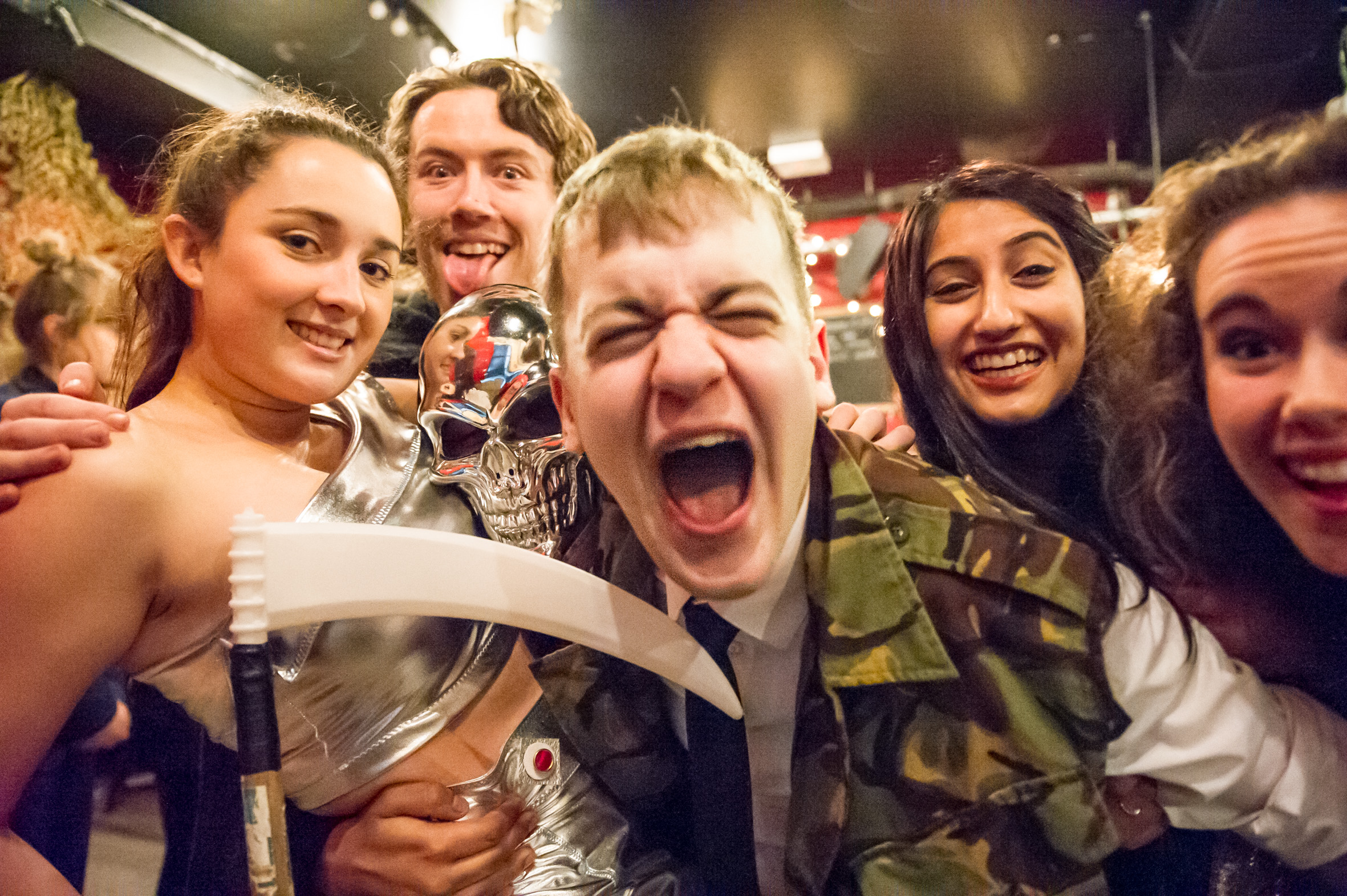
We, the audience, live the night alongside the teens. We’re invited to make “bad decisions”. I’m chanting “scull, scull, scull” or “pash, pash, pash” with the rest of them, caught in the fevered excess of the moment. I make a windshield so the lads can see who flinches first from a lighter held by the other underneath their palms. Of course, there are consequences to all of this behaviour, and some more consequential than others. But we see, and can understand the thrill of the present for these characters, rather than just coldly analysing the end results. That is something quite powerful. (You never know where the night will take you)
In media satire Live at Six audience participants help make the content each night. The show encourages its audiences to have their phones turned on, and footage captured by audience’s in the show’s foyer is edited in real-time during the show. You might find yourself featured in the show’s final news report too. It all feels like a very cutting edge way of blending technology and theatre, but as one person said to me, who actually watches the 6pm news?
It is too my regret that I missed Silo’s White Rabbit, Red Rabbit by Nassim Soleimanpour (I was gallivanting across Europe). This by all accounts was a unique experience for each night’s audience, who like each night’s actor, had no idea what was going to happen, or what the script was going to ask of them. Performer, and audience, were in the same boat. And sometimes audience members would get onstage and intervene. On Sharu Delilkan’s night, she observed that “looking around, the audience was pretty much on the edge of their seats from the get-go and throughout the 60-minute long show. So from that aspect this novel style of theatre seemed to work very well.”
She wrote:
If you’re one that likes to be challenged and surprised then White Rabbit, Red Rabbit is definitely for you. It is a bit like watching standup comedy where you can be picked on at any time but the difference is that the person standing up on stage in front of you is equally in the dark – which makes gives everyone in the room the chance to experience the crazy journey in tandem. In summary, I think it is a play that defies summarisation – not without giving it all away, or drawing lots of potentially pretentious conclusions. I think White Rabbit, Red Rabbit is brave, original and intriguing. I am still thinking about it – which I think is a good thing. (Shh…don’t tell anyone)
Next Generation
As Auckland artists continue to experiment with these “non-traditional” styles of theatre and audience performance, so too will the number of Auckland artists experimenting in this form increase. Watch this space. There a bunch of young lights ready to interrogate the boundaries of the theatrical experience.
As I wrote in the Playmarket annual:
The conditions are right. With the new Actors Program, Unitec, PIPA, and Auckland Uni all producing new theatre-makers (and the continued migration of Toi Whakaari grads), there’s a new generation coalescing who are hungry to make work (and generally hungry).
One of the more creatively rewarding shows this year was The Feast, a selection of three works that had gone through Red Leap Theatre Company’s incubator program. The works seemed on paper an odd ill-fitting bunch – visual puppetry of The Soldier’s Heart and The Feathered Girl, dance of identity Halfatasi, and good fun clowning of The Clown That Ran Away From The Circus – but worked together with the gracious hosting of the artists, and a delicious cupcake after each of the works, The Feast gave plenty of sustenance for discussion (and may I say, the best show for a delightful “first date”! Bravo team!).
While ATC were off partying Like There’s No Tomorrow, it was fantastic to see The Basement bring back the Auckland leg of the Young & Hungry Festival for actors and crew 15-25, featuring two shows by Auckland based writers Nic Sampson and Joseph Harper.
The Basement kicked off the first year of their risk share policy; artists did not have to shoulder so much financial risk, potentially opening up the theatre for bolder creative risks too. While there were plenty of misfires chronicled in our year of reviews (with room for development), there were many rewards too like original productions Gravity Hotel, Zooquatic, Yeti Trilogy, Outsider’s Guide, Goodbye My Feleni, and just for fun, A Basement Christmas Carol.
The Basement also held host to more established work or artists, and audiences were equally rewarded by the show values of Cloud 9, Between the Sheets, and the excruciatingly good Abigail’s Party, where at interval I was wondering how much more of the assault I could take.
A revival of Verbatim and Portraits (under the titleVerbatim), two plays written using interviews with criminals and their victims, made for heavy and unsettling viewing. Lively post-show discussions with the audience and a panel of experts helped put the plays in context and proved that these older works are just as important now (the judge on my night remarking that he sees the characters from these works in his court house ever day). I commend producers Last Tapes for their vision.
Director Benjamin Henson and the grad lads from Unitec returned with Titus as part of the new Q Presents, directed Hamlet at Unitec, and then Camino Real with the Actors Program, but his bag of scantily-clad tricks is starting to get a little too see-through. My question to Henson: What else have you got to show us?
Hamlet made a second appearance, this time played with rich introspection by Callum Gittins in Game of Thrones garb, and earlier in the year the University of Auckland celebrated fifty years of Summer Shakespeare with a majestic King Lear under the stars.
Q presents also gave us The Pitchfork Disney, and the venue was also home to a dirty love letter to the city’s most notorious street in K Rd Strip – A place to stand, as well as two touring productions based on local novels: Tawata Productions’ moving Tu, and Taki Rua’s Sydney Bride Upside Down – an ambitious production that got under your skin like no other. According to Sharu:
It’s rare that you sit in a theatre these days and wonder what is going on – often the start, middle and end of a play is laid out on a platter to you and audience members are rarely asked to use their brains. Being tested and provoked is something I thoroughly enjoyed. Whether I fully understood or will eventually understand what was being conveyed is immaterial – the fact that it has made me sit and think about show just shy of 24 hours later is what makes this experience unique and clever.
Locally The EDGE bought Prayas Theatre Company into the fold, with a city season of their slice of a little told life of Rudali The Mourner, as well as once again holding Short+Sweet, this time with an added week of Song.
There’s a lot then happening in Auckland theatre as the boundaries of what’s possible – both in terms of form, and in terms of ambition – continue to move outward.
But one final thought before I end this year’s reflection. For all this talk of what’s trendy, playwriting itself is by no means dead; in fact it’s in rude health and in good hands. Twenty-something Auckland Playwrights Jess Sayer and Sam Brooks have jointly won back-to-back b425 playmarket competitions, and this year they showed Auckland what they were made of, getting in on that other trend – doing it yourself.
Jess Sayer put on two of her plays (and acted in both as well) – Elevator and Wings – showing her flair for flawed characters and the darker stuff of life. Meanwhile Brooks put on three: And I was like, Queen, and Another Dead Fag.
That last play especially felt like you were part of something, a talented writer with a point of view and a production that had somewhere to take you. I sat absolutely hooked, absolutely active. Sometimes, great productions can do the moving for you.
Sam in a Theatre Scenes interview said:
I’m not arrogant enough to call myself an important voice or even a singular one, but I do think I’m filling a gap in New Zealand theatre, and in a way that I hope encourages others to do the same.
The conditions are right indeed. Forget World-Class. Auckland-Class is the place to be.
FOR MORE PERSPECTIVES ON 2013, SEE ALSO:
The Aforementioned Sam Brooks on The Best of Auckland Theatre in 2013

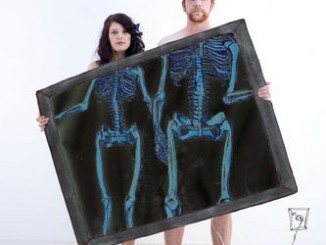
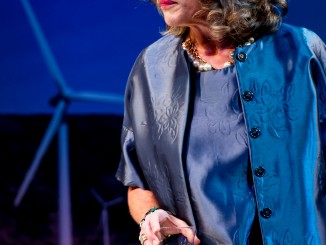
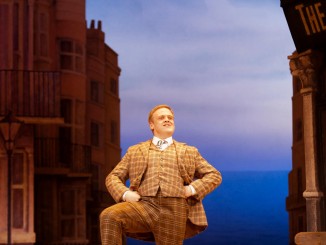
Leave a Reply